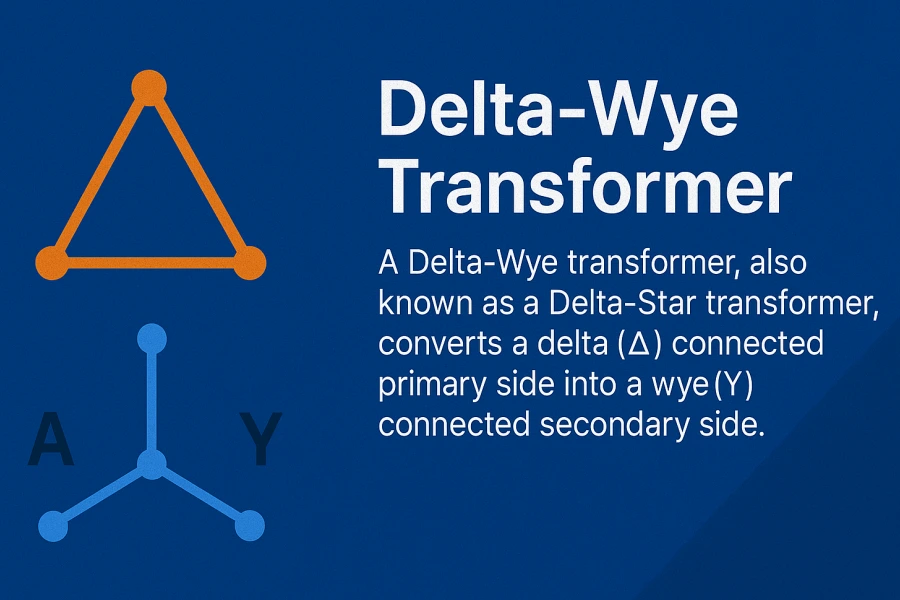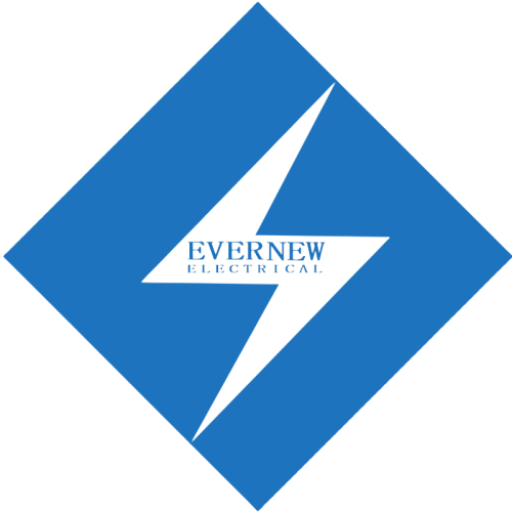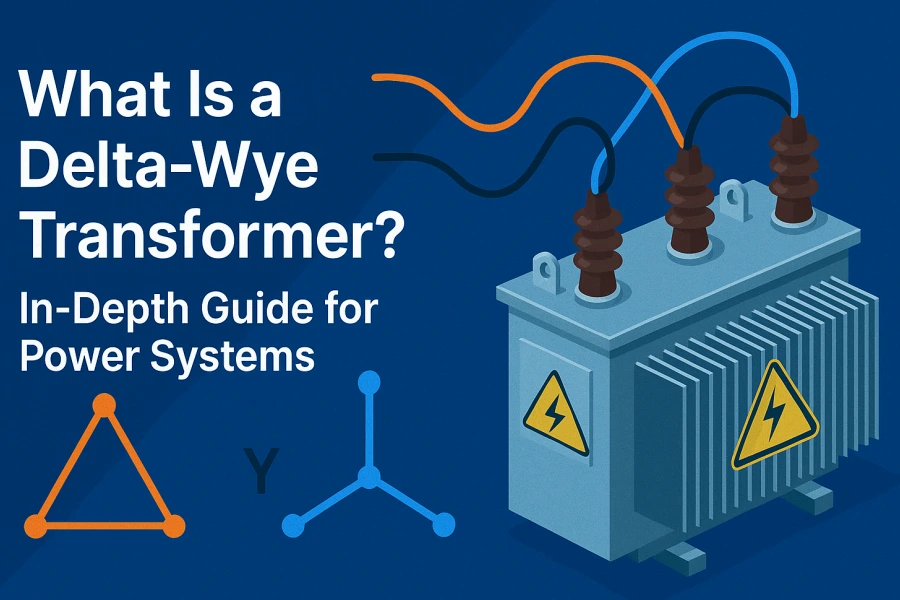Transformátor Delta-Wye, často označovaný jako transformátor Δ-Y, je široce používanou konfigurací v třífázových energetických systémech. Umožňuje efektivní transformaci napětí mezi úrovní výroby, přenosu a distribuce, zejména v komerčních a průmyslových sítích v Severní Americe, Evropě a na dalších světových trzích. Tato příručka se zabývá principy fungování, konstrukčním řešením, technickými výhodami, případy použití a klíčovými kritérii výběru transformátorů Delta-Wye.
1. Základní koncepce transformátoru Delta-Wye
A Transformátor Delta-Wye je třífázový transformátor, jehož primární vinutí je zapojeno v konfiguraci delta (Δ) a sekundární vinutí je zapojeno v konfiguraci wye (Y nebo hvězda). Tato konstrukce podporuje vysokonapěťový přenos a účinnou distribuci nízkého napětí, přičemž další výhodou je zajištění nulového bodu.
Delta (primární strana):
- Tři vinutí jsou spojena koncem ke konci a tvoří uzavřenou smyčku (trojúhelník).
- Běžné v přenosových sítích středního a vysokého napětí.
Wye (sekundární strana):
- Jeden konec každého vinutí se připojuje ke společnému nulovému bodu.
- Povoluje výstupy napětí mezi linkou a nulou i mezi linkou a nulou.
- Vhodné pro nízkonapěťové rozvody.
Dozvědět se více:Běžná zapojení vinutí transformátorů a jejich použití
2. Funkční princip činnosti
Primární konfigurace delta přijímá vysokonapěťový vstup a sekundární konfigurace wye dodává snížené napětí. Zapojení delta toleruje nesymetrické zatížení a izoluje zemní poruchy na primární straně. Na straně wye je zavedena nulová hodnota, což umožňuje uzemněný provoz a kompatibilitu s jednofázovými zátěžemi.
Důležitou charakteristikou je 30stupňový fázový posun mezi primárním a sekundárním napětím, který ovlivňuje synchronizaci systému při paralelním zapojení transformátorů.
3. Hlavní výhody transformátorů Delta-Wye
- Schopnost snižování napětí: Efektivně převádí vysoké přenosové napětí (např. 13,8 kV, 34,5 kV) na standardní distribuční úrovně (např. 400Y/230V nebo 208Y/120V).
- Neutrální dostupnost: Sekundár Wye umožňuje připojení jak třífázových, tak jednofázových zátěží.
- Pružnost uzemnění: Usnadňuje bezpečnější provoz uzemněním nulového vodiče.
- Zmírnění harmonických: Delta vinutí filtruje trojité harmonické (3., 9. atd.).
- Tolerance nevyváženého zatížení: Delta vinutí podporuje nevyváženost zátěže bez výrazného zkreslení napětí.
- Izolace mezi systémy: Elektricky odděluje primární a sekundární proud, čímž zvyšuje bezpečnost.
4. Běžné aplikace
- Rozvodny veřejných služeb: Snižovací transformátory v distribučních rozvodnách.
- Komerční budovy: Kancelářské komplexy a nákupní centra vyžadující napětí 208Y/120V nebo 400Y/230V.
- Průmyslové závody: Pro pohon těžkých strojů a zajištění pomocného jednofázového napájení.
- Obnovitelná energie: Rozhraní mezi větrnými/solárními střídači a místní sítí.
- Datová centra: Stabilní a vyvážené napájení s neutrálním přístupem pro zátěže IT.
Více informací:10 nejčastějších chyb, kterých je třeba se vyvarovat při nákupu napájecích transformátorů (a jak vybrat ten správný)
5. Typické konfigurace napětí
| Primární napětí | Sekundární napětí | Použití regionu |
|---|---|---|
| 13,8 kV | 208Y/120 V | Severní Amerika |
| 33 kV | 400Y/230 V | Evropa/Asie |
| 11 kV | 380Y/220 V | Blízký východ/Latinská Amerika |

6. Technické aspekty výběru
Při výběru transformátoru Delta-Wye by měli inženýři posoudit:
- Profil zatížení: Určete celkové zatížení, fáze a typ (odporové, induktivní).
- Jmenovité hodnoty primárního/sekundárního napětí: Shoda s místními úrovněmi přenosu a distribuce.
- Kapacita (kVA nebo MVA): Zajistěte dostatečnou rezervu pro očekávané a budoucí zatížení.
- Třída izolace: Sladit s tepelnými požadavky (např. třída F, H).
- Impedance a zkratová pevnost: Pro koordinaci s ochrannými zařízeními.
- Metoda chlazení: Olejové (ONAN/ONAF) vs. suché v závislosti na prostředí.
- Dodržování standardů: Zajistěte shodu s normami IEEE, IEC, ANSI nebo UL.
7. Výzvy a řešení
- Dopad fázového posunu: V soustavách s více transformátory je třeba zvládnout 30stupňový fázový rozdíl.
- Neutrální uzemnění: Pro koordinaci ochrany jsou zásadní správná schémata uzemnění.
- Harmonická citlivost: I když delta pomáhá, v citlivých instalacích mohou být nutné další filtry.
8. Závěr
Transformátory Delta-Wye jsou základními součástmi moderních energetických systémů, které zajišťují univerzální a spolehlivou transformaci mezi přenosem vysokého napětí a distribucí nízkého napětí. Díky vyvážené konstrukci, podpoře uzemnění a filtrování harmonických jsou ideální pro širokou škálu aplikací, od rozvoden až po komerční infrastrukturu.
Výběr správného transformátoru Delta-Wye zahrnuje pečlivé vyhodnocení charakteristik zátěže, tříd napětí, úrovně izolace a prostředí instalace. Při správném výběru a údržbě poskytují dlouhodobou stabilitu a účinnost v náročných elektrických sítích.

